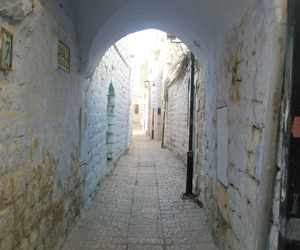Kabbalah In The Middle Ages
Starting in the 8th century, Sefer Yetzirah and the Heichalot texts began to make inroads with European Jewry. From the 12th century, kabbalistic groups began to spring up throughout Europe and some of them were so secret that almost no one knew of them. Modern scholars have documented the existence of some of these small mystical brotherhoods, for instance, "Iyun Circle," and "Unique Cherub Circle."
Of the more well-known Kabbalistic groups, the German Pietists, held a place of prominence during the 13th century and group members were almost all from a single family of academics, the Kalonymus family. This family's origins were in the French and German Rhineland.
Kabbalistic Underpinnings
Of course, Kabbalistic sages continued to churn out commentaries on the Torah, such as Isaac the Blind (1160-1235) who wrote the classical Kabbalistic work, Sefer Bahir. Isaac the Blind was the teacher of the Ramban, also known as Nahmanides (1194-1270) whose commentary on the Torah has Kabbalistic underpinnings. Rabbeinu Bahya known also as Bahya ben Asher (d. 1340) wrote a Torah commentary with some Kabbalah mixed in for good measure.
The main Kabbalistic work, the Zohar, became available to the public during the 13th century. After this point, the term Kabbalah was used to refer to the study of the Zohar, so that in practical terms, the Zohar became the preeminent book for the study of mysticism. The Zohar, by tradition, is attributed to Talmudic era scholar, Shimon Bar Yochai; however, the term Kabbalah underwent another evolutionary change as the Zohar began to be studied through the commentaries of Isaac Luria, also known as the Arizal. At this point, Kabbalah came to mean the Zohar as expounded in Lurianic thought. The Zohar is accepted by those adhering to strictest Jewish practice as the blueprint for understanding the Talmudic references to Maaseh Merkavah and Maaseh Breishit.
A Vision
Maaseh Breishit refers to the act of Creation. As for Maaseh Merkavah, or the Workings of the Chariot, this refers to the vision shown the prophet Ezekiel just before the First Temple was destroyed. This vision was a sign of the end of the one thousand year tenure of the reign of prophecy. In general, the expression refers to the first chapter of the book of Ezekiel, however the appellation is also applied as the name for the Kabbalistic tradition as manifested through the Lurianic writings on the Zohar.

